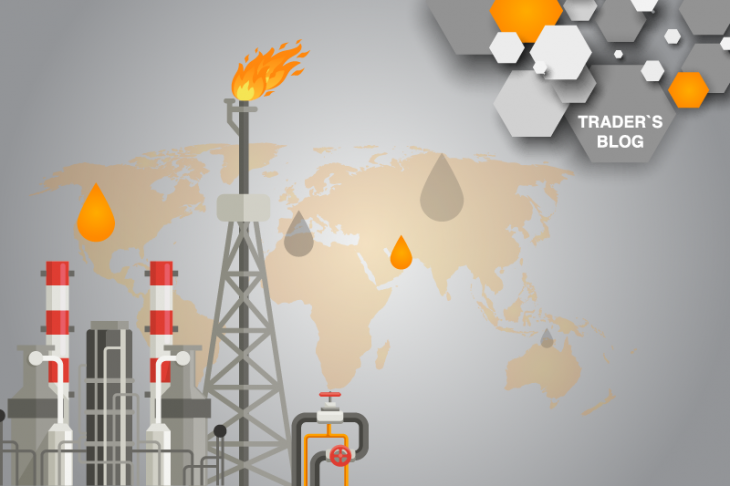
Oil market and its cloudy prospects
In early 2019, when the oil market moved to the correction, many began to talk about the restoration of oil prices to around $ 100 per barrel. It was expected that the brand BRENT will reach $ 100 per barrel in 2020, and some talked about the end of 2019. The reason for such expectations was the restriction of oil production in OPEC and non-cartel countries. At the same time, the United States expected the oil shale oil to be exhausted quickly. And if the USA shalers are not strangled by fierce competition, they will be beaten by profitability. But, as history has shown, the production of shale oil in the United States has experienced both low prices and fierce competition.
But the main enemy of the oil market, was not shale oil, but the US foreign policy. Or rather, the US trade war, which caused a slowdown in the global economy and, as a result, a decrease in oil demand.
In the middle of 2019, even the most ardent optimist could not expect that the oil market would return to the mark of $ 100 per barrel by the beginning of 2020. And the reason for this is the general market pessimism associated with the preservation of tension around the US trade confrontation. But it is also worth to highlight a number of factors directly related to the oil market.
The decline in oil production in Iran and Venezuela did not provide adequate support.
This happened on the data on the reduction of oil supplies from Iran due to the exacerbation of the US sanctions and the reduction of oil exports from Venezuela on political risks. Thus, total exports from these countries decreased by almost 2.2 million barrels per day. This supported the oil in the first half of 2019. But not one of the pessimistic forecasts does not expect recovery in oil production from Iran or Venezuela.
Risks of renewed production inside OPEC +
At the end of June (June 25-26), a meeting of OPEC and non-cartel countries is scheduled. The main issue of this meeting will be the continuation of an agreement to restrict oil production. And if earlier the extension of the agreements on the limitation of production looked like a resolved issue, now between the main parties to the transaction to restrict oil production, Saudi Arabia and Russia are facing pressing issues. This raised doubts about the extension of the transaction or, as a result, the revision of quotas for oil production.
Officials of Saudi Arabia and Russia reject the possibility of refusing to limit production quotas. But doubts about the effectiveness of this decision are emerging more often.
Slowdown in oil demand from China
The demand for oil in China began to decline with the aggravation of trade relations with the United States. This was due to a decline in production and, as a consequence, China’s GDP growth rates. Following the slowdown in the Chinese economy, the global economy began to show a slowdown in growth rates. This triggered a downward revision of world oil consumption forecasts.
According to various forecasts of major world banks, the oil surplus in 2020 will vary from 100 thousand barrels per day to 1 million barrels per day. This will force large oil producers to limit oil production, and the oil market expects a new decline. And the decline to the minima of 2018 looks highly expected.
Oil quotes chart (BRENT brand – Japanese candlesticks, WTI brand – blue line)
Anton Hanzenko